Best instant coffee
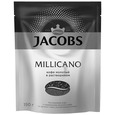
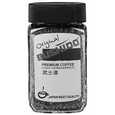


The modern world is a fast life in general, and fast coffee in particular. Despite the fact that instant coffee appeared in the last century for completely different reasons, it, incidentally, approached the rhythm of modern life, which, among other things, allows it not to give up and continue to lead the coffee market, taking advantage of huge demand at consumers. The best sorts of instant coffee will be discussed in this rating.
What is instant coffee, its pros and cons
In essence, instant coffee is a dry coffee concentrate, a mixture of soluble aromatic and flavoring substances extracted (extracted) from coffee beans. Dissolving such a concentrate in water (hot or cold), you can get a drink that resembles natural coffee to taste and aroma, made from ground coffee beans, but still not as rich and strong as, for example, espresso, which for many is large plus - not everyone likes the taste of classic coffee.
The advantages of instant coffee:
Quick drink preparation: there is no need to brew coffee in a Turk, a geyser or a coffee machine, and accordingly to buy the necessary equipment for this.
Convenience and cleanliness:
- such a drink can be prepared even in the field, simply dissolved in hot water;
- no coffee grounds.
Profitable: Despite the fact that instant coffee often costs more than grain (in terms of 100 g), the first is more economical (for comparison, to make a cup of espresso you need to take about 10 g of ground coffee, to make coffee from an instant analog extract);
Availability and shelf life: instant coffee is sold almost everywhere and can preserve its flavoring qualities longer than coffee beans, which lose their freshness after 2 months from the moment of roasting.
Cons of instant coffee:
- The biggest minus of ersatz coffee (though it is a plus for some consumers) is his taste and aroma. A drink made from instant coffee very vaguely resembles a drink made from natural coffee beans. Accordingly, for coffee gourmets who value coffee primarily for its flavoring properties, and not just for caffeine cheerfulness, instant coffee will not work;
- Caffeine amount: in instant coffee, the amount of caffeine is less than in a cup of espresso (about two times);
- Nutritional supplements: in the manufacture of instant coffee can be used flavors, dyes, preservatives and other additives to improve the taste and aroma;
- Raw material: for the production of ersatz coffee is used less quality raw materials compared to natural coffee beans.
Best Instant Coffee - 2018 Rating
| Category | A place | Name | Rating | Price |
|---|---|---|---|---|
| Best Premium Premium Instant Coffee | 1 | Egoiste noir | 9.9 / 10 | 400 |
| 2 | Bushido original | 9.8 / 10 | 600 | |
| The best instant coffee of an average price category | 1 | Carte noire classic | 9.9 / 10 | 320 |
| The best inexpensive instant coffee | 1 | Jacobs millicano | 9.7 / 10 | 200 |
| 2 | Jardin colombia medellin | 9.7 / 10 | 200 | |
| 3 | Nescafe Classic | 9.4 / 10 | 170 |
Best Premium Premium Instant Coffee
|
Egoiste noir
400 (100 g, sublimated, glass jar)
The German brand Egoiste, which also produces ground coffee and coffee beans, is engaged in the production of instant coffee with the utmost seriousness and expertise. Since the entire manufacturing process, from roasting to packaging of the finished product, takes place in one factory, it allows you to control product quality from the very beginning of the process. The production of this instant coffee is a qualitative washed Arabica from Kenya, which is processed by the method of freeze dry (freeze-dried).Accordingly, the output is an excellent product: both in flavor and in taste, this instant coffee is very similar to freshly brewed coffee. It is worth noting that Egoiste Noir belongs to the premium coffee segment, which affects the price. Main advantages:
Minuses:
|
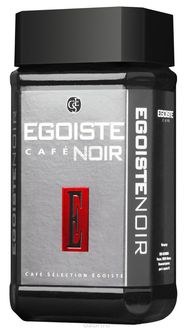 9.9 / 10
Rating
Reviews
To taste and aroma is practically indistinguishable from coffee from the Turks, with pleasure I drink even without sugar and milk. |
|
Bushido original
600 (100 g, glass jar)
Bushido is a Japanese company that produces premium freeze-dried instant coffee. But, despite the fact that the company is Japanese, coffee is made in Switzerland. The fact is that initially Bushido was produced only for the Japanese market, but then the geography of distribution expanded, and now Bushido can be purchased in Russia. The range of instant coffee is represented by 4 products: Red Katana, Black Katana, Light Katana and Original, which are made from different raw materials, and therefore differ in taste, in particular, in strength. Red and Black Katana have a denser body and rich taste, and Light Katana will appeal to lovers of softer coffee with a delicate taste. Bushido Original is made from coffee beans grown in South America. This instant coffee has a classic taste, balanced by bitterness and acidity, pleasant aroma and rich color. Externally, Bushido Original coffee crystals are slightly different from other brands of freeze-dried coffee: they are multi-colored and have a denser texture. Main advantages:
Minuses:
|
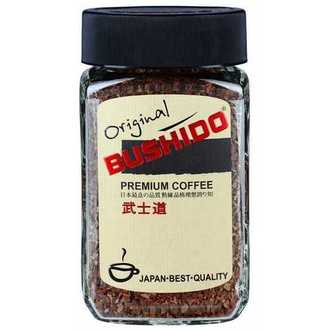 9.8 / 10
Rating
Reviews
Delicious coffee, no doubt, but it is not always possible to get it, it hurts the price is high, but he is also a premium class. |
The best instant coffee of an average price category
|
Carte noire classic
320 (75 g, sublimated, soft pack)
Carte Noire is a French coffee brand, unrelated to the Russian “Black Card”, despite the same name (albeit in different languages). Carte Noire is made from high-quality Arabica medium roast by freeze-drying, that is, by sublimation, which allows to preserve the aroma and taste of good coffee beans to the maximum. Instant coffee Carte Noire has earned a lot of positive feedback from fans of the invigorating drink. Main advantages:
Minuses:
|
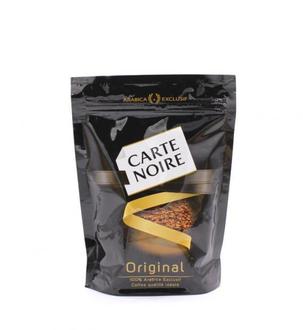 9.9 / 10
Rating
Reviews
For me, Carte Noire is a discovery, fragrant and tasty, I did not expect this from instant coffee; but you should not drink at night, you can fall asleep for a long time. |
The best inexpensive instant coffee
|
Jacobs millicano
200 (75 g, soft pack)
Coffee brand Jacobs, as well as Carte Noire, belongs to the concern Kraft Foods. Jacobs ranks second in popularity in the instant coffee market, second only to Nescafé. Jacobs Monarch Millicano - this is not the usual sublimated instant coffee. It is prepared according to the technology of “ground coffee in instant”: each granule of coffee extract contains finely ground particles of roasted coffee beans, which, according to the manufacturer’s assertions, gives the drink even more richness in taste and aroma. Main advantages:
Minuses:
|
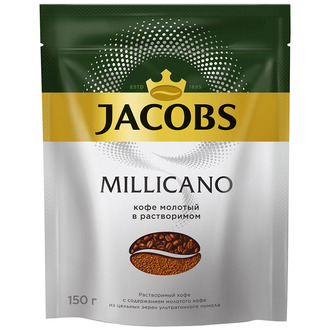 9.7 / 10
Rating
Reviews
It is worthy of instant coffee, suitable for every day, in the office, for example, quite invigorating. |
|
Jardin colombia medellin
200 (95 g, glass jar)
Orimi Trade GK under the Jardin brand produces primarily grain coffee, including the Specialty category. But instant coffee of this brand is also popular with consumers. The company has retained an approach to the name of the product by geographical origin and for instant coffee, so the Jardin assortment has freeze-dried coffee called Colombia Medellin. This means that Arabica for the production of this coffee was grown in the region of Medellin, in Colombia. Colombia Medellin can be called the golden mean - it is high-quality sublimated coffee at a relatively low price with decent flavor characteristics. Main advantages:
Minuses:
|
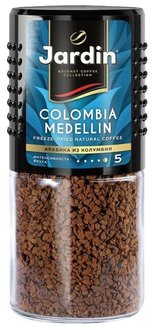 9.7 / 10
Rating
Reviews
There is nothing strange or repulsive in taste, good instant coffee will be an excellent option for the office. |
|
Nescafe Classic
170 (100 g, soft pack)
With Nescafé, the victorious procession of instant coffee began all over the world, because it was he who became the first industrial design of an instant coffee drink, produced in 1938 at the Nestlé plant. The name itself, “Nescafé”, is a combination of two words: “Nestlé” and “café” (“coffee”). In many countries, Nescafé has already become a household name, denoting instant coffee as a product. Due to the fact that Nescafé was part of the dry ration of American soldiers who served in Europe during World War II, instant coffee quickly became popular not only in America, which was the main market for Nescafé, but also in Europe. Main advantages:
Minuses:
|
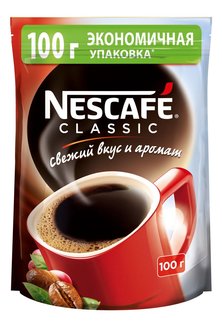 9.4 / 10
Rating
Reviews
Instant coffee Nescafe classic is not that favorite, but it is really awesome. |
Instant coffee invention
The history of this drink began in the early 20th century in America. In fact, the idea of making instant coffee belongs to a Japanese-American scientist. Satori Kato, which invented the method of obtaining this product.
But practically George Constant Washington, an American entrepreneur and inventor who lived for some time in Guatemala and engaged in agriculture, invented the technology for the production of instant coffee on an industrial scale. On his return to America, in 1909, Washington founded his business and brought to the market a product under the Red E Coffee brand, the first commercially available instant coffee. Subsequently, the Washington company became the main supplier of coffee for the American army during and after the First World War. But despite the success of the business, not the best quality and unpleasant taste of early instant coffee were noted.
More extensive research on the creation of instant coffee, as we know it now, began in the 1930s in Brazil, which was (and remains to this day) the world's largest coffee producer and importer. The problem was that for several years Brazil faced the problem of overproduction of green coffee. After drying and preprocessing, millions of sacks of coffee beans remained unclaimed, which were very difficult to store for a long time. Therefore, the Brazilian government decided to appeal to the leadership of the Swiss company "Nestlé with a request to help solve the problem of surplus coffee harvest.
Before By max morgenthaler, chemical technologist "Nestlé", the task was to create a method for the preservation and processing of coffee beans. After four years of research and practical tests, Nestle decided to stop the experiment and closed the project. But Morgenthaler did not give up, continuing to work on the creation of a "coffee cube" technology that would withstand long-term storage and turn into a drink after adding hot water, while maintaining the properties of coffee beans.
In his spare time after work, Morgenthaler, buying coffee at his own expense, continued to work on the creation of instant coffee. Two years later, in 1936, Morghentaler managed to finally fix the aroma of coffee, which had been lost in the process of processing the grains, and transfer it to the final product.
As a result, in 1938, in industrial conditions, the factory “Nestlé”, was first produced instant coffee powder, called "Nescafé", and later became incredibly popular around the world.
Ways to make instant coffee
The whole essence of the manufacture of instant coffee is reduced to the following technological processes:
- Roasting green coffee beans;
- Grinding roasted coffee;
- Treatment of ground coffee with hot water, or extraction, i.e. brewing coffee.
These stages of the technological process are similar to how coffee is prepared at home, only this happens on an industrial scale.Next, the resulting coffee extract is filtered, separated from the ground, and dried. That is, the last stage of the technological process is drying, which determines the type of instant coffee obtained. Thus, it can be of the following types:
- powder. Such coffee is produced using spray-dry technology, “spray drying”. Coffee extract is sprayed in a stream of very hot air, and, drying, turns into a powder;
- granulated. This coffee is made from powder, which is made by spray drying, adding another stage to the process - aggregation, which, in essence, is the wetting of coffee powder to form granules. Such granules then, during storage of the finished product, can again disintegrate and turn into powder;
- sublimated.This coffee is produced by the technology freeze-dry (freeze dry), “freeze-drying”. The coffee extract is frozen, then crushed into small crystals, and then dehydrated by sublimation in a vacuum. After evaporation of water, the dry extract retains the shape of the crystals, acquiring a caramel color.
This method of manufacturing best preserves the taste and aroma of coffee extract, but due to the fact that this technology is the most energy- and time-consuming, freeze-dried instant coffee is more expensive than powder and granulated coffee.
Raw materials for the production of instant coffee
Each manufacturer of this product with the help of advertising convinces its consumers that for the production of instant coffee is used only arabica, with the highest quality. But the reality is that if it were true, the price of instant coffee would be several times higher than the grain. The price for 100 g of instant coffee and so is higher than the cost of the same amount of grain due to the use of energy-intensive processes for the manufacture of soluble analogue of natural coffee. In addition, due to the peculiarities of the process of making instant coffee, most of the aromatic and flavoring substances of coffee beans are lost in the process. Thus, the use of high-quality grain for the production of ersatz coffee is economically disadvantageous.
It is also worth considering the fact that top-grade Arabica is bought by roasting companies that produce natural coffee beans. For the production of instant coffee, they mainly use coffee beans that have remained unclaimed on the natural coffee market: not sorted by defects, not having a unique or just good flavor potential (mediocre grain), sometimes even affected by a disease (mold, fungi) or just grains obtained from unripe coffee berries.
Another source of raw materials for the production of instant coffee is robusta. The beans of this type of coffee do not have such a bright taste and aroma, like arabica, but Robusta contains more caffeine, which is even an advantage when a person wants to get a cup of coffee is not so much taste (you can disguise it with milk or sugar if he is unpleasant), how much is just a cheerfulness charge. In addition, Robusta is quite unpretentious in cultivation, which allows you to grow this type of coffee without any special costs, unlike Arabica, which ultimately can have a positive impact on the price of the finished product, to which Robusta was added.
Despite some shortcomings, instant coffee has long won the market and is deservedly popular with consumers. Let the fragrant drink please you every morning!




